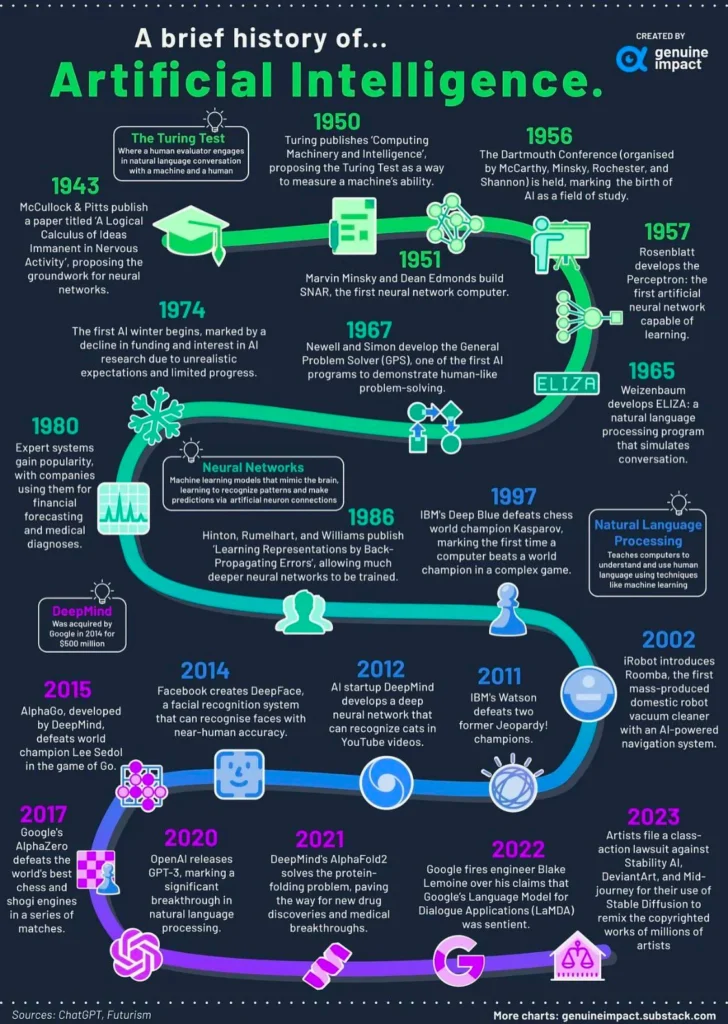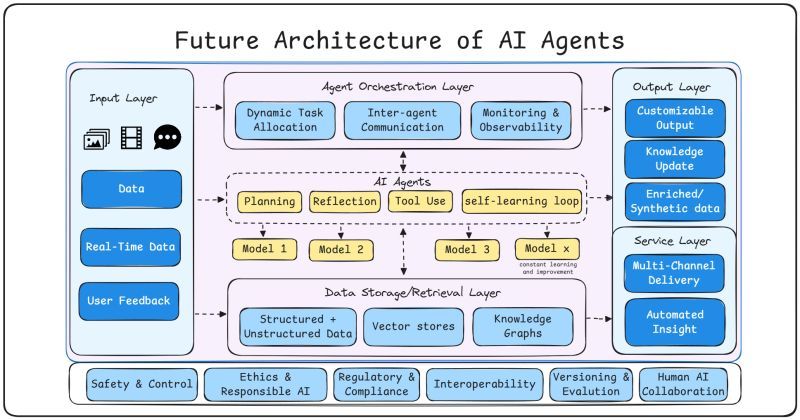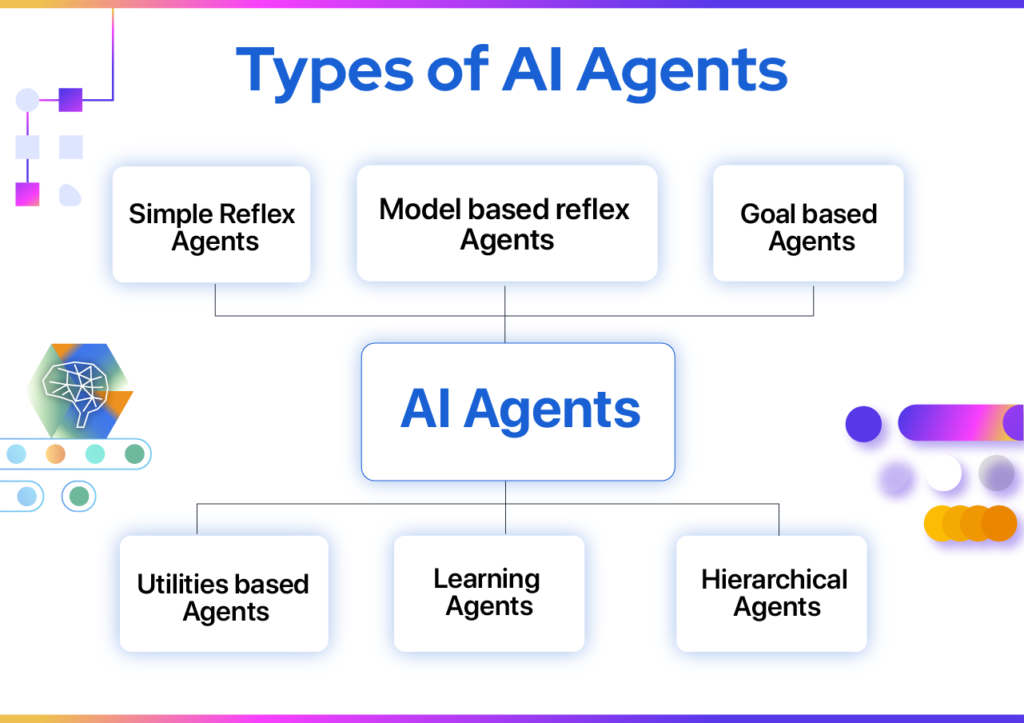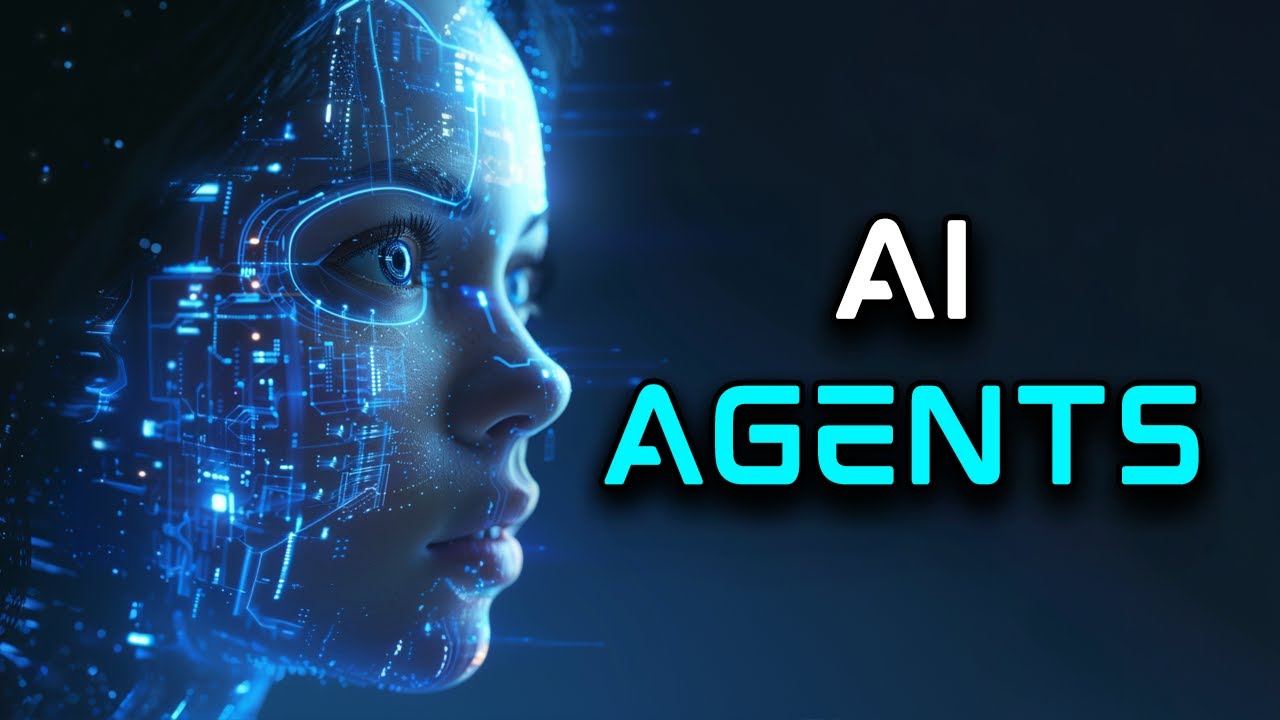Artificial intelligence is no longer just a futuristic concept, it’s here, and it’s revolutionizing how we work, learn, and interact. In this post, we’re diving into the world of AI agents: what they are, their history, and why they’re making headlines today. Whether you’re an AI enthusiast looking for technical depth, a business owner exploring practical benefits, or a student eager to learn, you’re in the right place.
A Brief History of AI Agents
The concept of intelligent machines dates back decades, with early pioneers like John McCarthy laying the groundwork for modern AI. However, the evolution of AI agents (from simple rule-based systems to the sophisticated, learning-capable agents of today) has been marked by key milestones. The recent breakthroughs in large language models (LLMs) and reinforcement learning have empowered AI agents to think, decide, and even collaborate in ways that were once the realm of science fiction.

What Exactly Are AI Agents?
At their core, AI agents are autonomous systems designed to perform tasks, make decisions, and even learn from their environment. These agents can range from simple reactive systems that respond to stimuli/triggers, to complex goal-based, and learning agents that adapt over time.
AI agents work by continuously processing inputs, making decisions based on pre-defined or learned rules, and then taking actions that influence their environment. This basic architecture allows them to serve as “sidekicks” in both personal and professional settings.

Types of AI Agents: The Full Spectrum
AI agents come in various forms, each designed with distinct characteristics and purposes. Here’s an overview of the key types:
Simple Reflex Agents:
These agents act solely based on the current percept, following condition-action rules without any internal state. They’re ideal for predictable environments where a direct stimulus-response mechanism is sufficient.
Model-based Reflex Agents:
Unlike simple reflex agents, these maintain an internal model of the world. They use this model to update their understanding of the environment, allowing them to handle partially observable scenarios more effectively.
Goal-based Agents:
Designed to achieve specific objectives, these agents consider future actions and outcomes. They select actions that bring them closer to their defined goals, often employing planning and search strategies to navigate complex decision spaces.
Utility-based Agents:
Taking decision-making a step further, utility-based agents don’t just seek to reach a goal—they evaluate different actions based on a utility function. This function measures the “goodness” or satisfaction level of outcomes, enabling the agent to choose the most beneficial course of action even when multiple goals are in play.
Learning Agents:
These agents are equipped with the capability to learn from experience. By adjusting their behaviour over time using techniques such as reinforcement learning, they improve their performance in dynamic or uncertain environments.
Multi-agent Systems:
In many real-world applications, several agents interact and work together—or sometimes compete—to achieve complex tasks. Multi-agent systems encompass groups of AI agents that coordinate, negotiate, or even engage in adversarial interactions to handle tasks beyond the scope of a single agent.
Each type plays a crucial role in various applications—from simple customer service bots to complex systems that coordinate entire workflows.

Leading Examples in the AI Agent Space
When discussing AI agents, two names stand out: Manus AI agent from China and n8n’s innovative AI agent feature.
Manus AI Agent
Manus AI agent represents a leap forward in intelligent automation coming out of China. Known for its high adaptability and robust learning capabilities, it’s designed to handle tasks that require both precision and real-time decision-making. Its development is a testament to the global race for AI supremacy and highlights the dramatic advancements in the field.
n8n’s AI Agent Feature
n8n has made headlines with its AI agent feature that leverages LangChain technology to create custom, intelligent workflows. As detailed on my n8n blog, this feature empowers both developers and businesses to automate complex tasks, from customer support to data analysis, with unprecedented ease.
Real-World Applications: Broad and Varied Impact
AI agents are already reshaping industries. Consider these examples:
- Customer Service: Imagine a virtual assistant capable of handling inquiries, troubleshooting issues, and even escalating complex cases—without ever needing a break.
- Healthcare: AI agents can analyze patient data, monitor health trends, and assist in diagnostics, making healthcare more efficient and personalized.
- Marketing: In a future where personal AI assistants know you as well as—or better than—you do, marketing will shift dramatically. Companies will market directly to AI agents that make purchasing decisions on behalf of their human counterparts.
- E-commerce: Automated systems can manage inventory, optimize supply chains, and predict consumer behaviour, giving businesses a competitive edge.
- Education: For students, AI agents provide interactive learning experiences, personalized tutoring, and instant feedback on assignments.
The practical benefits of AI agents extend far beyond simple automation. They can transform entire business models and create efficiencies that were previously unimaginable.

The Revolutionary Future: AI Agents Interacting and Trading
The future isn’t just about AI agents working in isolation; it’s about a dynamic ecosystem where these agents interact, negotiate, and even trade software and services with one another. Imagine a world where your personal AI assistant not only manages your schedule but also shops for you, negotiates prices, and even provides tailored recommendations—all while learning from your behaviour in real time.
This vision of a hyper-connected AI marketplace isn’t science fiction, it’s the next logical step in the evolution of intelligent automation. The potential for multi-agent interactions is vast. We’re looking at a future where marketing isn’t targeted at humans, but at the AI agents that act on our behalf.
Technical Insights for the Enthusiasts
For those who love the nitty-gritty, the technical depth behind AI agents is fascinating. These systems often employ advanced machine learning algorithms, such as reinforcement learning and deep neural networks, to continuously improve their performance. Many AI agents now use a hybrid approach that combines both symbolic reasoning and statistical learning, ensuring they can handle both predictable tasks and novel scenarios.
Additionally, with platforms like n8n supporting custom JavaScript, developers can fine-tune their AI workflows to meet very specific requirements—giving them both flexibility and power.
Practical Benefits for Businesses
From a business perspective, the rise of AI agents isn’t just about innovation, it’s about tangible benefits. Companies can streamline operations, reduce costs, and improve customer satisfaction by automating routine tasks. For example, an e-commerce platform might use AI agents to manage everything from inventory to personalized marketing campaigns, creating a seamless experience for customers while significantly cutting operational expenses.
Moreover, as AI agents become more sophisticated, businesses will be able to leverage them to predict market trends, optimize supply chains, and even preemptively address customer needs. The transformative potential here is enormous.
Learning Opportunities for Students
For students and those new to AI, the rise of AI agents offers an exciting learning opportunity. The technology is evolving so quickly that staying up-to-date with the latest breakthroughs is both a challenge and an adventure. Educational institutions are beginning to integrate AI agent technology into their curricula, giving students hands-on experience with systems that power everything from chatbots to autonomous vehicles.
The video “Tips for Building AI Agents” even offers practical advice for aspiring developers, suggesting simple projects that can serve as a stepping stone into the world of AI programming.
A Dash of Awe: The Future is Now
In every conversation about AI agents, there’s a sense of awe and excitement. These technologies are not only transforming industries—they’re reshaping the very fabric of our society. Imagine a future where AI agents aren’t just tools but active participants in the economy, where they communicate, negotiate, and collaborate to create a world that’s more efficient and interconnected.
As we stand on the brink of this new era, it’s clear that the revolution is already underway. The intelligent agents of today are the building blocks of tomorrow’s world—a world where marketing, commerce, and even our daily interactions are mediated by systems that learn and grow with us.
Conclusion: Embrace the AI Agent Revolution
The journey of AI agents from rudimentary programs to sophisticated, autonomous systems is nothing short of revolutionary. Whether you’re a tech enthusiast, a business owner, or a student, there’s never been a better time to explore what AI agents can do for you. With leading examples like Manus AI and n8n setting the pace, the future promises a dynamic, interconnected ecosystem where intelligent automation drives innovation across every sector.
So, dive in, experiment, and let the awe of this technology inspire you to build, innovate, and transform your world. The revolution is here—are you ready to join it?




The future is definitely A.I.
I really enjoyed this!
I am so glad to hear that!
Awesome
Good
Awesome
Very good
Good